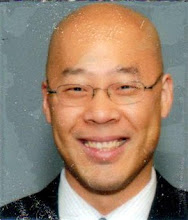Property (2005-2006)
III. POSSESSORY ESTATES
- Fee Simple Absolute
- Largest estate; includes all rights to property
- Creation – "to 'A' and heirs"
- Heirs
- Issue (children and direct descendants)
- Ancestors (parents and direct ancestors)
- Collaterals (siblings, cousins, uncles, aunts, nieces, nephews)
- Escheat - If no heirs, property escheats to state.
- Finite Estates
- Types
- Life Estate
- Term of Years
- Creation
- Life estate - "to 'A' for life"
- Term of years - "to 'A' for 25 years"
- Term of years - "to 'A' from October 5, 2005 to October 5, 2030"
- Future Interest
- Reversion (grantor)
- Remainder (anyone else)
- Types
- Defeasible Estates
- Fee Simple Determinable
- Automatically ends upon satisfaction of condition
- Created by durational language
- "so long as"
- "while"
- "until"
- "during"
- "unless"
- Future interest - "possibility of reverter" (to grantor)
- Fee Simple Subject to Condition Subsequent
- May end upon satisfaction of condition; transferor's discretion, not automatic
- Created by limiting language
- "but if"
- "provided that"
- "on the condition that"
- Future interest – "right of reentry" (to grantor)
- Fee Simple Subject to Executory Limitation
- Looks like either of the other defeasible estates, but future interest is in a third party
- Springing - cuts off grantor
- Shifting - cuts off anyone else
- Fee Simple Determinable
- Cases
- White v. Brown – Where language unclear as to life estate or fee simple with restraint on alienation, policy is to avoid limits on alienation, and prefer fee simple absolute.
- Baker v. Weedon – Where the identity of remaindermen is clear, law of waste implies life tenant may not sell property without consulting remaindermen. (Note similarity to joint tenancy.)
- Mahrenholz – Conveyance to transferee "to be used for school purposes only" creates fee simple determinable, not fee simple subject to condition subsequent; future interests transferable.
- Toscano - A conditional restriction on a conveyance creates a defeasible fee instead of a simple fee with restraint on alienation.


No comments:
Post a Comment